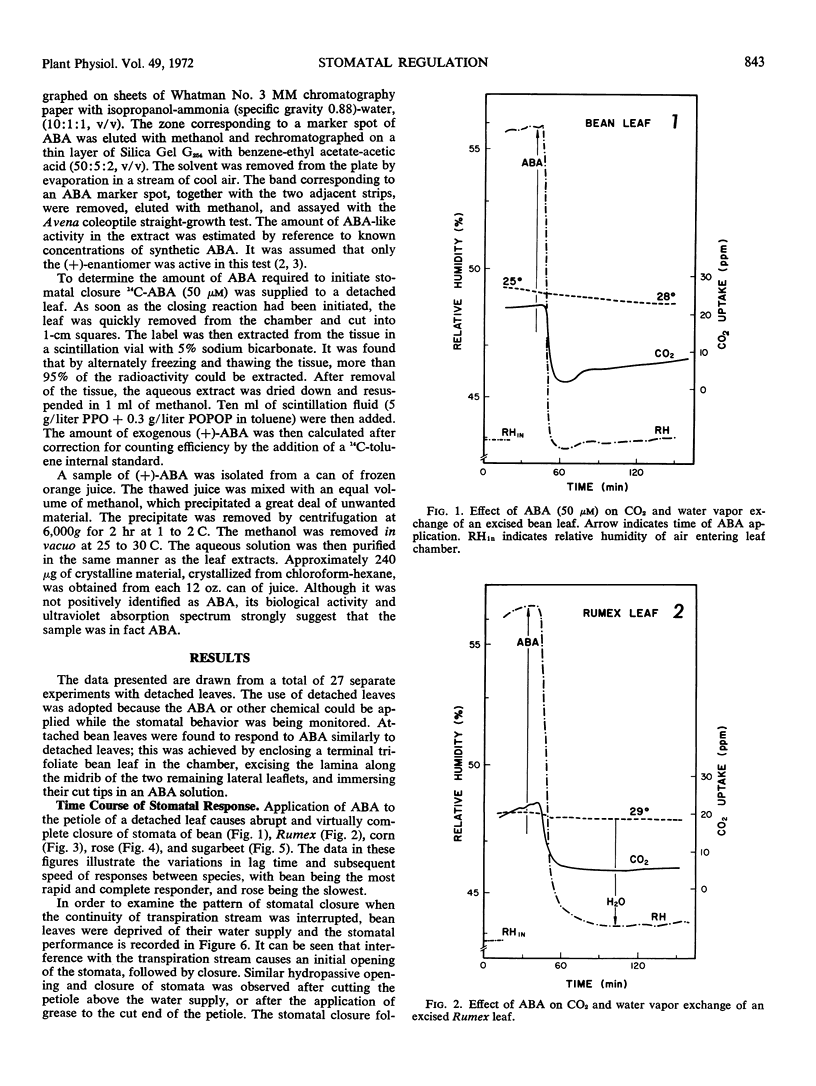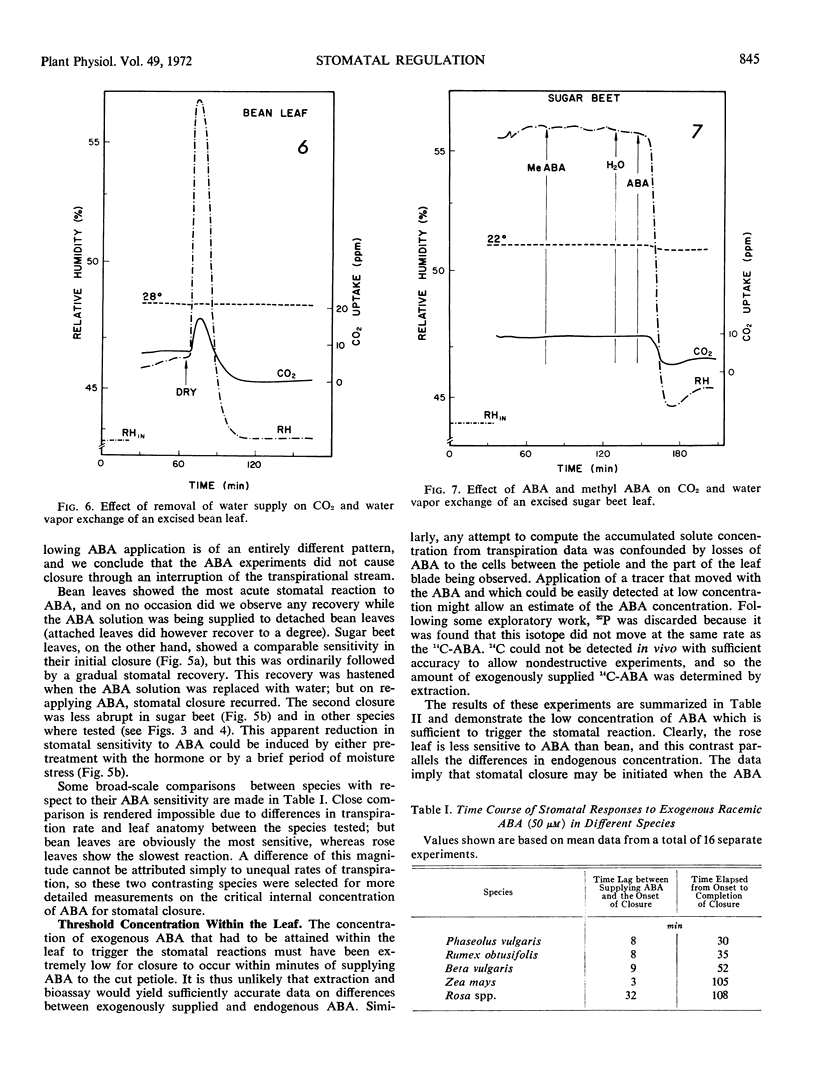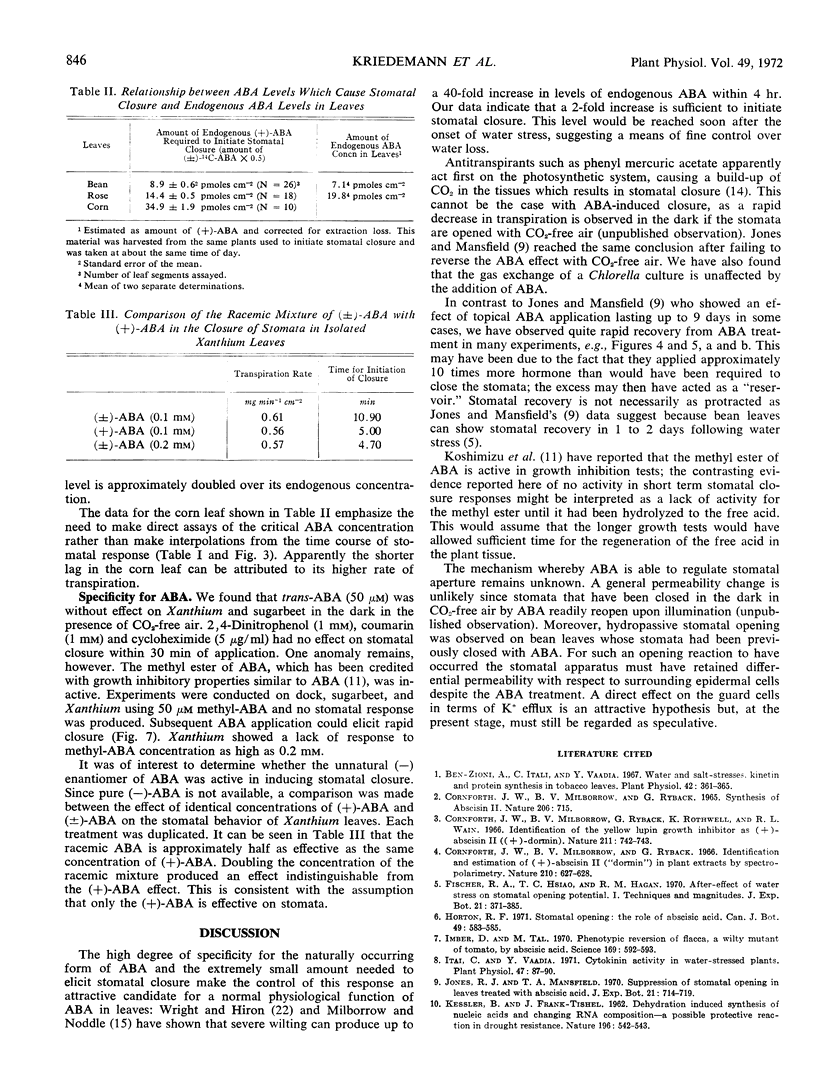Abstract
The closure of stomata by abscisic acid was examined in several species of plants through measurements of CO2 and H2O exchange by the leaf. The onset of closure was very rapid, beginning at 3 minutes from the time of abscisic acid application to the cut base of the leaf of corn, or at 8 or 9 minutes for bean, Rumex and sugarbeet; rose leaves were relatively slow at 32 minutes. The timing and the concentration of abscisic acid needed to cause closure were related to the amounts of endogenous abscisic acid in the leaf. Closure was obtained in bean leaves with 8.9 picomoles/cm2. (+)-Abscisic acid had approximately twice the activity of the racemic material. The methyl ester of abscisic acid was inactive, and trans-abscisic acid was likewise inactive. The effects of stress on levels of endogenous abscisic acid, and the ability of very small amounts of abscisic acid to cause rapid closure suggests that stomatal control is a regulatory function of this hormone.
Full text
PDF





Selected References
These references are in PubMed. This may not be the complete list of references from this article.
- Ben-Zioni A., Itai C., Vaadia Y. Water and salt stresses, kinetin and protein synthesis in tobacco leaves. Plant Physiol. 1967 Mar;42(3):361–365. doi: 10.1104/pp.42.3.361. [DOI] [PMC free article] [PubMed] [Google Scholar]
- Cornforth J. W., Milborrow B. V., Ryback G., Rothwell K., Wain R. L. Identification of the yellow lupin growth inhibitor as (+)-abscisin II ((+)-dormin). Nature. 1966 Aug 13;211(5050):742–743. doi: 10.1038/211742b0. [DOI] [PubMed] [Google Scholar]
- De Koning A. J. Estimation of sphingomyelin. Nature. 1965 May 15;206(985):715–716. doi: 10.1038/206715b0. [DOI] [PubMed] [Google Scholar]
- Imber D., Tal M. Phenotypic reversion of flacca, a wilty mutant of tomato, by abscisic Acid. Science. 1970 Aug 7;169(3945):592–593. doi: 10.1126/science.169.3945.592. [DOI] [PubMed] [Google Scholar]
- Itai C., Vaadia Y. Cytokinin Activity in Water-stressed Shoots. Plant Physiol. 1971 Jan;47(1):87–90. doi: 10.1104/pp.47.1.87. [DOI] [PMC free article] [PubMed] [Google Scholar]
- Milborrow B. V., Noddle R. C. Conversion of 5-(1,2-epoxy-2,6,6-trimethylcyclohexyl)-3-methylpenta-cis-2-trans-4-dienoic acid into abscisic acid in plants. Biochem J. 1970 Oct;119(4):727–734. doi: 10.1042/bj1190727. [DOI] [PMC free article] [PubMed] [Google Scholar]
- Mizrahi Y., Blumenfeld A., Richmond A. E. Abscisic Acid and transpiration in leaves in relation to osmotic root stress. Plant Physiol. 1970 Jul;46(1):169–171. doi: 10.1104/pp.46.1.169. [DOI] [PMC free article] [PubMed] [Google Scholar]
- Stoddard E. M., Miller P. M. Chemical Control of Water Loss in Growing Plants. Science. 1962 Jul 20;137(3525):224–225. doi: 10.1126/science.137.3525.224. [DOI] [PubMed] [Google Scholar]


